-
The combination of drought and warming climate places severe strain on California’s water supply
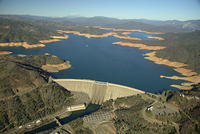
As stores of water in the West are reduced — whether by usage in drought, evapotranspiration in heat, or both — warming temperatures also see the snowpack on the wane. The two phenomena together could put severe strain on water supplies, with implications for ecosystems, industries, and people alike. Even at their most severe, the droughts of decades and centuries past did not occur in tandem with today’s degree of temperature change or have to contend with the demands of a population that in California alone now numbers above thirty-eight million residents. As needs for water grow ever greater, so, too, do the potential threats to its supply.
-
-
The world likely to face more frequent, and more severe, blackouts
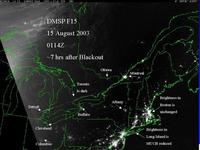
U.S. household electricity usage increased by 1,300 percent between 1940 and 2001. In the last few decades, air conditioning has been the greatest factor in increased electrical consumption, and one of the greatest sources of systematic strain, with considerably more blackouts occurring in the summer months than during winter. The electricity used to fuel America’s air conditioning is currently of a similar volume to the U.S. entire energy consumption in the 1950s. A new study reveals that today’s occasional blackouts are dress rehearsals for the future, when they will occur with greater frequency and increased severity. Power cuts will become more regular around the globe as electrical supply becomes increasingly vulnerable and demand for technology continues to grow at an unprecedented rate.
-
-
Natural flood management as a solution against future flooding
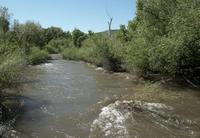
Natural Flood Management (NFM) aims to reduce the downstream maximum water height of a flood — the peak — or delay the arrival of the flood peak downstream, increasing the time available to prepare. Back-to-nature flood schemes which use the land’s natural defenses to slow river flow and reduce flooding could be a cost-effective way of tackling one of the biggest problems facing the United Kingdom today.
-
-
Israel considering earthquake-proofing important Biblical-period structures
Israel is located in one of the world’s earthquake-prone areas, along the friction point of the African and Arabian tectonic plates.Officials in Israel are taking preventative measures to protect the country’s most important ancient sites from earthquake damage. Engineers from the University of Padua in Italy have installed sensors throughout the Tower of David, one of Jerusalem most important historical sites, to determine what sort of earthquake-proofing may be needed. Some experts opined that in the event of an earthquake, Jerusalem’s most ancient structures might actually be the city’s most dependable. “If they still stand after so many earthquakes during the last 2,000 years, they must be good structures,” one of them said.
-
-
Thumbnail-sized quantum cascade laser, tuning forks detect greenhouse gases
Human activities such as agriculture, fossil fuel combustion, wastewater management, and industrial processes are increasing the amount of nitrous oxide in the atmosphere. The warming impact of methane and nitrous oxide is more than 20 and 300 times, respectively, greater compared to the most prevalent greenhouse gas, carbon dioxide, over a 100-year period. Methane and nitrous oxide detection is crucial to environmental considerations. Scientists use a thumbnail-sized quantum cascade laser (QCL) as well as tuning forks that cost no more than a dime to detect very small amounts of nitrous oxide and methane.
-
-
Central U.S. faces threat of major earthquakes
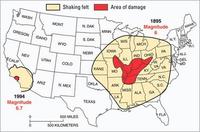
In the winter of 1811-12, the New Madrid Seismic Zone in central United States produced four powerful earthquakes (magnitude 6 and higher). The region has experienced a steady series of smaller earthquakes since. A debate has swirled in recent years, fueled in part by past studies suggesting that continuing New Madrid seismic activity could be the tail end of a long-lived aftershock sequence following the 1811-12 earthquakes. If the seismic activity since 1811-12 is an aftershock sequence, the argument goes, then there is no evidence that stress is currently building in the zone. A new study concludes, however, that the level of activity since 1811-12 must be the signature of active, ongoing processes that continue to generate stress in the region —stress which is expected eventually to be released in future large earthquakes.
-
-
“Virtual earthquakes” used to forecast Los Angeles quake risk
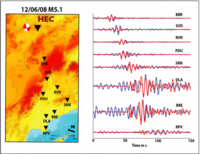
Stanford scientists have developed a new “virtual earthquake” technique and used it to confirm a prediction that Los Angeles would experience stronger-than-expected ground motion if a major quake occurred along the southern San Andreas Fault. The new technique capitalizes on the fact that earthquakes are not the only sources of seismic waves – rather, there is also an ambient seismic field consisting of much weaker seismic waves. The scientists devised a way to make these ambient seismic waves function as proxies for seismic waves generated by real earthquakes. By studying how the ambient waves moved underground, the researchers were able to predict the actions of much stronger waves from powerful earthquakes.
-
-
Texas wants to know whether fracking causes earthquakes
Texas has about 35,000 active injection wells. About 7,000 of Texas’s injection wells are used for disposing wastewater deep underground, and some experts say these wells can cause earthquakes. In response to the several minor earthquakes which occurred in late 2013 around the Azle, Texas area, local officials are investigating whether oil and gas drilling in North Texas and the injection wells that follow after, are responsible for the quakes.
-
-
Nearby Georgia basin may amplify ground shaking from quakes in Vancouver
In Greater Vancouver, there are more than 700 12-story and taller commercial and residential buildings, and large structures — high-rise buildings, bridges, and pipelines — which are more affected by long period seismic waves, or long wavelength shaking. Researchers find that tall buildings, bridges, and other long-period structures in Greater Vancouver may experience greater shaking from large (M 6.8 +) earthquakes than previously thought due to the amplification of surface waves passing through the Georgia basin.
-
-
Coastal flooding in Ireland offers warning of things to come
Flooding in Ireland and the U.K. is typically associated with heavy rainfall, but the reason for more recent coastal flooding is different. Experts say that the increases in mean sea level suggests that mean sea-level rise rather than storminess is largely contributing to the dramatic increase in the frequency and scope of coastal flooding. Major cities like Cork, Dublin, and Galway will soon feel the impact of sea-level rise, and developers are discouraged from building within 100 meters of soft shoreline.
-
-
TV audiences often do not care about suffering in other countries
Television audiences care less about suffering experienced by people in other countries when they watch the news than when they watch a range of different programs, according to new research. New research finds that study participants were in many cases indifferent to what they saw and relieved that it did not affect them, especially the younger and male viewers. There were instances, however, mostly among older and female participants, of particularly emotional responses to suffering.
-
-
Growing threat of intense tropical cyclones hitting East Asia
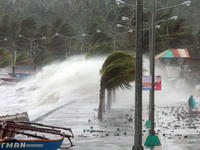
The intensity of tropical cyclones hitting East Asia has significantly increased over the past thirty years, according to a new study. The coastlines of China, Korea, and Japan in particular have experienced increasingly stronger cyclones, which the researchers have attributed to increasing sea surface temperatures and a change in atmospheric circulation patterns over the coastal seas.
-
-
Know when to go: a new way to keep firefighters safe from harm
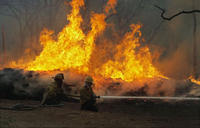
For a firefighter, knowing when it’s time to evacuate can be the difference between life and death. But that can be a difficult call to make when you’re trying to protect life, property and resources while battling wildfires in arduous weather and terrain. Whether working at the fire’s edge or creating a fire break far from the front, firefighters must maintain situational awareness and monitor impending threats to their safety. When firefighters are unable to properly recognize risks, or they underestimate conditions, the results can be tragic.
-
-
Toxins-breathing bacteria to help industry, environment
Preliminary tests suggest that the bacteria could be used to remove these pollutants from the wastewater and protect the surrounding ecosystems. Buried deep in the mud along the banks of a remote salt lake near Yosemite National Park are colonies of bacteria with an unusual property: they breathe a toxic metal to survive. Researchers believe that this unusual organism may one day become a useful tool for industry and environmental protection – for example, the bacteria could be used simply to clean up the water, but it might also be possible for the bacteria to help humans recover and recycle the valuable elements in the water.
-
-
New L.A. fault map threatens Hollywood development projects
The state of California recently released new geological maps which reveal the presence of an active earthquake fault along the path of major developments in Hollywood. The maps established a zone of 500 feet on both sides of the fault, and state law will require new developments within the zone to conduct underground seismic testing to determine whether the fault runs beneath planned development sites. Building on top of faults is prohibited. Three prominent Hollywood developments — the Millennium Hollywood skyscraper project, the Blvd6200 development, and an apartment project on Yucca Street — are within the 500-foot fault zone.
-
- All
- Regional
- Water
- Biometrics
- Borders/Immig
- Business
- Cybersecurity
- Detection
- Disasters
- Government
- Infrastructure
- International
- Public health
- Public Safety
- Communication interoperabillity
- Emergency services
- Emergency medical services
- Fire
- First response
- IEDs
- Law Enforcement
- Law Enforcement Technology
- Military technology
- Nonlethal weapons
- Nuclear weapons
- Personal protection equipment
- Police
- Notification /alert systems
- Situational awareness
- Weapons systems
- Sci-Tech
- Sector Reports
- Surveillance
- Transportation
Advertising & Marketing: advertise@newswirepubs.com
Editorial: editor@newswirepubs.com
General: info@newswirepubs.com
2010-2011 © News Wire Publications, LLC News Wire Publications, LLC
220 Old Country Road | Suite 200 | Mineola | New York | 11501
Permissions and Policies
Editorial: editor@newswirepubs.com
General: info@newswirepubs.com
2010-2011 © News Wire Publications, LLC News Wire Publications, LLC
220 Old Country Road | Suite 200 | Mineola | New York | 11501
Permissions and Policies
